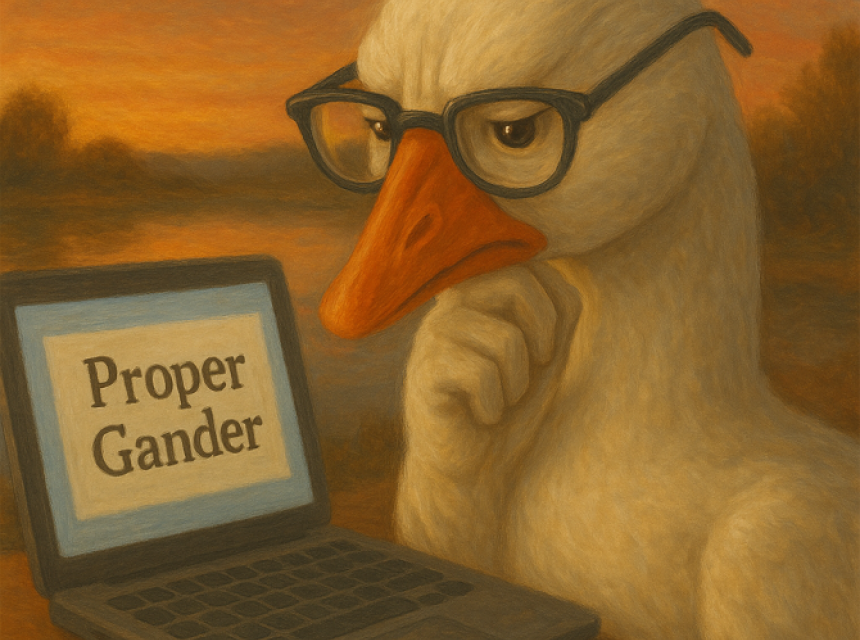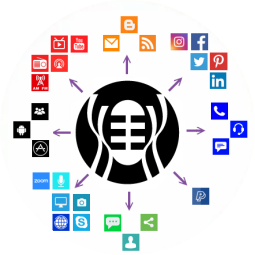How to Enhance Critical Thinking in Youth
In today’s digital world, children are bombarded with information on social media—some true, some twisted. Critical thinking skills help them navigate this flood of content with discernment and confidence. By pausing to question, research, and reflect, they learn not to accept everything at face value. This skill empowers them to find their own truths and resist manipulation. Teaching children to think critically online is one of the most vital ways we can help them thrive in a world overflowing with both wonder and misinformation.
This article is a variety of activities which parents and mentors can use to assist children investigating the online world. It includes:
- A story with follow up activities
- An intuitive research challenge and creative presentation
Some of these are discussed on the 30th May All Learning Reimagined podcast.
Enjoy!
Teresa 2025
The Tale of the Digital Jungle (allegory)
In a small village, there was a wise old librarian named Mira. She had watched the world shift and transform over the years. Once, children would gather at her library to hear tales of wonder. Now, she saw them glued to screens—scrolling, liking, and sharing, swept up in a whirlwind of digital information.
Mira knew that technology held the power to connect and enlighten. But she also knew it could be a trap. The digital jungle was full of bright and shiny things—some true, some twisted. One sunny afternoon, she gathered a group of teenagers beneath the old oak tree behind her library.
“Today,” she spoke gently, “I want to share a secret—one that will help you find your way through the jungle of information on your screens.”
The teens looked at her curiously. Mira continued, “The online world is vast and rich. It can inspire and inform. But it’s also a place where rumors grow like weeds, and where half-truths are dressed up as facts. Propaganda, misinformation, and carefully designed distractions are everywhere. They don’t always look dangerous. Sometimes they’re exciting or even comforting. But if you’re not careful, they can pull you away from your own truth.”
One boy raised his hand. “How can we tell what’s real and what’s not, Mira?”
Mira smiled and reached into her satchel. She pulled out a small magnifying glass for each teen. “This is a symbol,” she said, handing them out. “Not for your eyes, but for your mind. Use it to magnify what you see and hear. When you read something that feels too good, too shocking, or too convenient—pause. Ask yourself: Who said this? Why? Is there evidence? Can you find another source? Or even a third?”
She paused, then leaned in closer. “And there’s something even more important,” she urged. “Listen to your intuition—your gut feeling. You have an inner compass that helps you sense what resonates as true. If something feels off, trust that instinct. Don’t dismiss it. Question it further.”
The teens nodded thoughtfully, turning the magnifying glasses in their hands. Mira continued, “You must also remember that the human mind is programmable.
Repetition can make even false ideas seem familiar. Just because you’ve heard something many times does not make it true. Propaganda thrives on this trick—repeating an idea until it feels like fact. Don’t take everything at face value, even if it’s popular or repeated again and again.”
She looked at each of them with calm, steady eyes. “Be cautious of echo chambers, where only one viewpoint is shared. Challenge yourself to see other perspectives, to read widely and listen with discernment.”
As the sun dipped lower behind the hills, Mira watched the teens leave, their magnifying glasses catching the last rays of light. She felt hopeful. She knew that by planting these seeds—critical thinking, intuition, and the courage to question—she had given them a compass to navigate the digital jungle and the world beyond.
Follow up Activities
For educators, parents, or even self-reflection for teens
Discussion Questions
1️. What stood out to you in Mira’s story?
- Did anything feel familiar about the “digital jungle” she described?
2️. Have you ever seen information online that seemed too good, too shocking, or too convenient?
- What did you do in that situation?
3️. What does your intuition feel like when something doesn’t sit right?
- Can you remember a time when you trusted that feeling? What happened?
4️. Why do you think repeating information can make it seem true, even if it’s not?
- How does this happen in social media or everyday life?
5️. What do you think Mira means when she says, “The human mind is programmable”?
- How can you protect your mind from false ideas?
Activities for Young People
1. Fact-check challenge
- Find an article or social media post that seems exciting or controversial.
- Use your “mind magnifying glass” to check: Who wrote it? What’s the source? Can you find evidence elsewhere?
- Share what you discovered and how it felt to investigate!
2. Intuition art
- Create a drawing, painting, or collage that shows what your intuition looks like or feels like.
- Use colours, symbols, or images to show how you sense what’s true for you.
3. Repetition awareness
- Spend a day tracking repeated messages in advertisements, music, or social media.
- How often do you see the same ideas? Do you agree with them, or did you just get used to them?
4. Create a “truth shield”
- Design a symbolic “shield” that represents your critical thinking and inner wisdom.
- On the back, write a few phrases that remind you to pause, question, and trust your gut.
Enhancing Critical Thinking Research Challenge
Intention: We are going to focus on critical thinking and will investigate popular conspiracy theories currently circulating online to discern what is fact and provable vs opinion and possibly propaganda. Can we prove the theory is true?
Why: With the rise of Artificial Intelligence rapidly influencing our society and bombardment by misinformation and/or censorship online, being able to think logically is more important than ever.
Steps:
In small teams, participants will choose a theory that interests them (age appropriate) and investigate:
-
What AI says – observing possible bias of information
-
What can be proven – and include sources from a variety of places
-
What is public opinion or cannot be proven
-
Consider where this theory/concept is observed in art, music, film
-
Discern and decide your own opinion based on your own intuition and feelings. What resonates as truth or does not resonate?
-
Creatively present findings and opinions to an audience in ANY way. This is not being judged or assessed. (For example: song, poem, poster, speech, movie, 3D creations from clay or paper mâché, dance, story, PowerPoint etc.)
Participants are encouraged to talk to family and friends to ask for opinions as well, as part of their investigation. Teachers/mentors are not encouraged to share personal opinions, as it is up to the students to determine their own findings.
List of possible alleged theories to investigate (there are hundreds of options)
|
The moon is a machine.
|
The moon landing was fake. |
The Earth is flat. |
The Earth has an ice wall. |
Ghosts are real. |
|
Cow emissions cause global warming. |
Pyramids were built by Aliens. |
Elvis Presley (and/or Michael Jackson) is still alive. |
Aliens live among us (like Men in Black) |
Bermuda Triangle is a portal. |
|
Predictive programming - The Simpsons predicts the future. |
The Tartarian Empire was a real civilisation destroyed in 1800s by mud floods. |
Atlantis was real. There are still underwater cities.
|
Area 51 exists and has crashed spaceships. (Roswell cover up) |
Med Bed healing technology exists. (secret beds that can miraculously heal) |
|
Giants lived on Earth.
|
Gigantic ‘home trees’ (like in the film Avatar) existed on Earth. |
Reptilians run the US government. |
Chem trail spraying is poisoning people. |
Disney stars are clones grown in labs. |
|
Coca Cola used to have cocaine in it.
|
Fluoride makes people compliant and stupid. |
Dinosaurs live in inner Earth. Dinosaurs are actually dragons. |
Nikola Tesla invented a way to harness free energy from the ether. |
A secret society runs the world governments – New World Order. |
|
It is possible to control the weather with technology. |
Nicotine kills nanotechnology. |
Mythical creatures exist: unicorns, kraken, fairies, werewolves, dragons, big foot… |
Dead internet theory – 50% of the internet is run by bots and not people. |
Australia is not a country; it is a corporation and owned by America. |
|
We live in a computer simulation – Matrix. |
Humans can breathe under water without equipment. |
Humans can levitate or fly.
|
Smart phones listen in on private conversations. |
Some birds are spies – mechanical robots. |
Theory chosen: ________________________________________________
|
What does AI say? (Try to ask AI in a number of different ways. Use different search engines if possible and compare information provided. ChatGPT, Azure, Grok, perplexity, Gemini, Brave, Bing, Duck Duck go) |
|
|
|
|
|
Facts – provable. (List sources used) |
Opinions – people you interview and unproven information |
|
|
|
|
Identify movies, songs, artwork that perpetuates this theory: |
|
|
|
|
|
Intuition: Everyone has their own perspectives based on life experiences. Regardless of fact and opinions above, what does your own intuition/ heart feel?Y |
|
|
|
|
Individual or group verdict on this theory:
_________________________________________________________________








